All about crushed marble
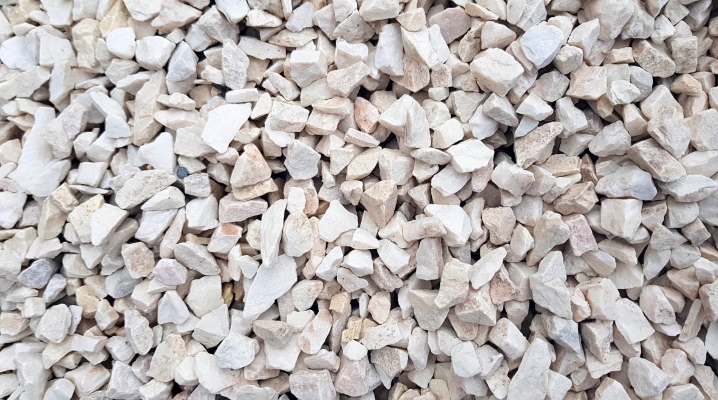
Modern construction has a lot of materials that can be used for work. Of no small importance is the stone, which is universal; it can be used as an element of decor or landscape design. One of the most common types of such material is marble crushed stone, which will be discussed.
Peculiarities
This stone is one of the most frequently used not only because of its versatility, but also for its special properties.
- Appearance. This stone combines practicality and beauty, which allows it to be in demand in various types of construction activities. Separately, it should be said about the varieties of crushed stone, which make it possible to make the decor varied.
- Physical properties. This material has a high level of fire safety, which is important to consider when building large rooms or large buildings. It is also worth mentioning the level of electrical conductivity, which is minimized, which allows the use of gravel in electrical engineering.
- Resistance to environmental influences. As a natural material, crushed marble is a durable construction element that protects a building from many negative effects, among which the appearance of fungus and dirt can be distinguished. With regard to chemical resistance, this stone is immune to mineral oils, alkali and its solutions, as well as organic solvents and emulsions.
- Environmental friendliness. Crushed stone is of natural origin, as it is mined during the processing of marble. It belongs to the first radioactive level, therefore it is completely safe and does not contain harmful impurities, and also has a low percentage of dust content.
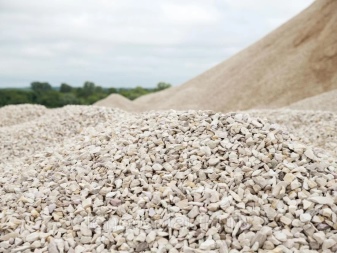
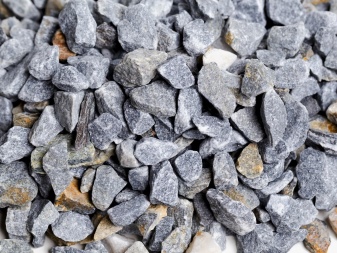
As for the characteristics applicable to this material, a few are worth noting.
- Density grade. It varies from M-800 to M-1200, depending on the quality of the crushed stone and the manufacturer. Accordingly, the more reliable the stone, the more expensive it is, and the better suited for complex construction projects.
- Density. This parameter is 2650 kg per cubic meter. meter.
- Bulk weight is equal to 1450 kg per cubic meter. meter.
- Frost resistance has an F value of 150. To understand how much or how little it is, it is worth pointing out that for various stones this characteristic has a range from 50 to 1000. Given the scope of the standard type of material, 150 out of 1000 is quite enough for use in construction.
- Flakiness. This characteristic is one of the most important for crushed stone, as it demonstrates the shape of the grains and their strength. Crushed marble has an average of 35%, which means that the shape of the material is more rounded and is standard both in quality and in price.
- Dust content. An equally important parameter that reflects one of the properties of the environmental friendliness of the stone. As noted earlier, crushed stone is better than most other materials in this indicator, which is only 2%.
- Weak grain content. With only 5% at this point, marble crushed stone is often used as a material for various building mixtures, which guarantees the density and reliability of concrete.
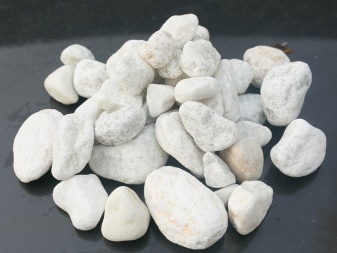
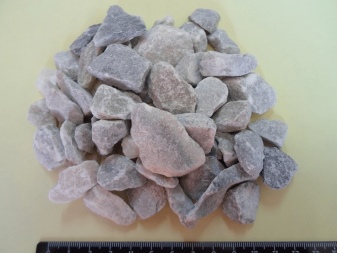
Having a particularly wide scope of application, marble crushed stone complies with various GOSTs, which provide indicators for both construction and decorative types of this stone. Therefore, before a potential bulk purchase from a manufacturer, make sure that the product has a certification that proves the quality of the product.

Species overview
Given the variety of crushed marble, depending on the application, it is worth making an overview of some types and paying attention to how the grains of this material can differ. It's worth starting with sizes that are as variable as possible. Usually there are small, medium and large options for stones. The first starts from 2 to 10 mm, with 5 mm and 10 mm being the most commonly used. Most manufacturers sell stones in the 2-5, 3-7, 5-10 and 7-12 mm ranges. They are most often used in decor and landscape design.
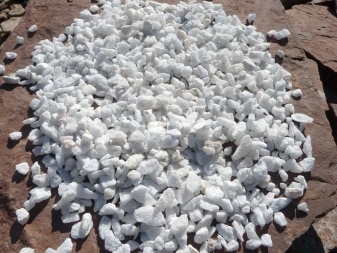
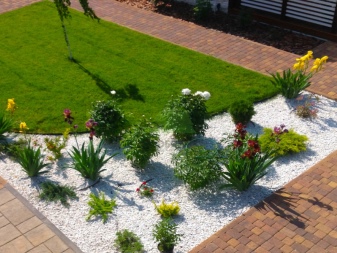
Mediums have a range of 20-40 mm, where a variety of options are possible. Larger chips are also often used for aesthetic purposes. The main measure of small and medium-sized marble crushed stone is bags. Given the low dust content of this material, transportation and direct use becomes quite simple, which will not lead to environmental pollution.
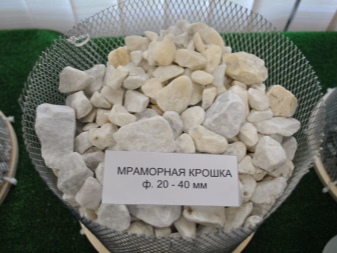
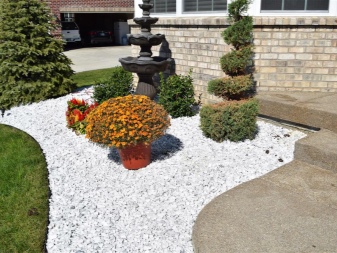
Large size starts from 70 mm and more. In large-scale construction, stones up to 20 cm long can be used, which is the most convenient for working with the material. Larger pieces are also sold in bags, but a sturdier fabric is recommended for safe transport.
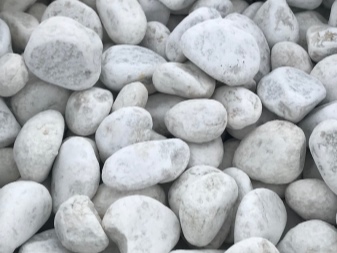
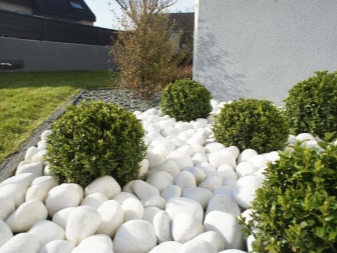
Further, it is worth mentioning the shape of the grains. It mainly ranges from lamellar to needle-shaped figures. As for the characteristics, the lower flakiness makes the crushed stone cuboid. It is valuable in construction, since the use of a stone of this shape allows you to make a tighter compaction of the mixture and save material. Thus, the cost of the product is reduced. Also, cube-shaped crushed stone is stronger than usual.
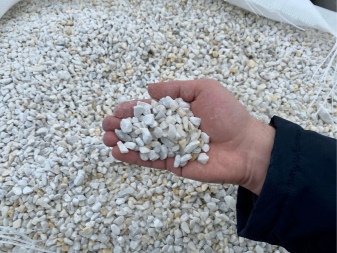
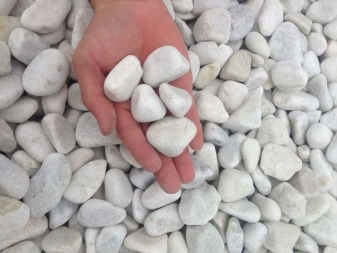
Modern technologies allow manufacturers to obtain chips and pieces of stone of the most similar size, thereby reducing the risk of acquiring completely separate granules of completely different sizes.
If in construction this may not be of practical value, then in the decor this feature can become one of the decisive ones in the selection of both the size of crushed stone and the material in general.
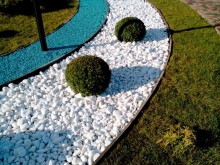
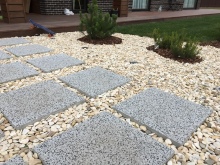
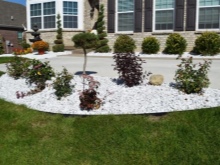
Color palette
Now it is worth mentioning the various shades of this stone and what features the colored marble crushed stone possesses.
- First of all, it should be noted that so far the most common shade is white. It finds application not only in landscape design, but also in construction, where not appearance is important, but physical and chemical properties.
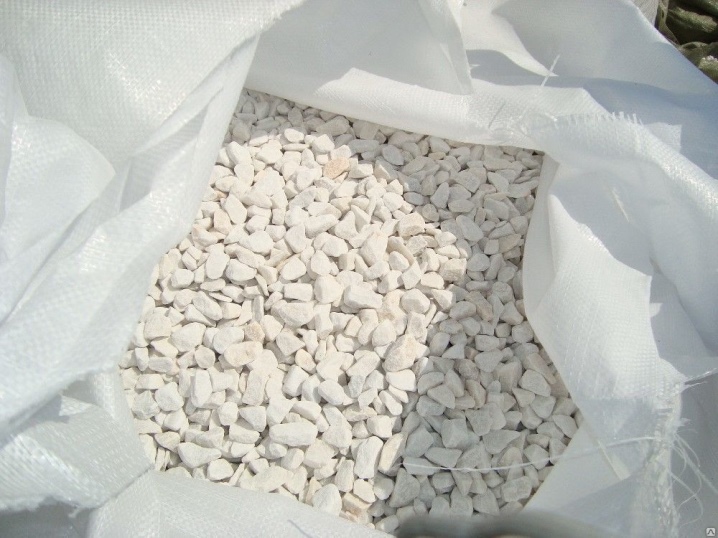
- Another popular color is gray and its various shades. Differing from white in a duller appearance, this shade is more suited to the everyday atmosphere. The range of gray colors is very varied.
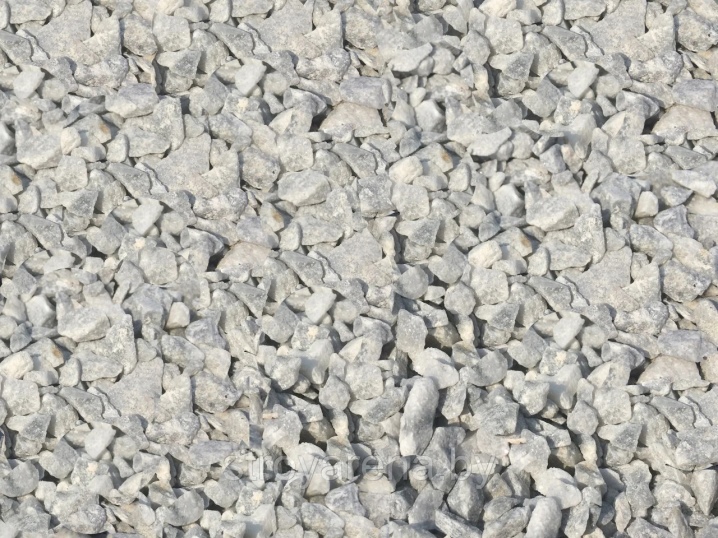
- As for the colored decorative options, various effective coloring agents are used in their processing, which make the final palette of crushed stone very juicy and, most importantly, durable. The special chemical composition prevents paint fading and protects against other environmental influences. The most popular colors are blue, yellow and light red. Stones of these shades are successfully used in various decorative works.
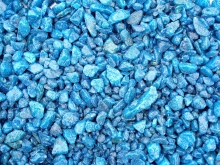
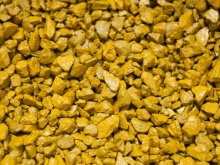
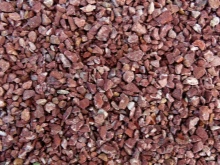
- There are also more varied color palettes that can be applied to themed design ideas. As a rule, it is not difficult to find such specimens, since the painting process provides for the possibility of applying any shade to the material. Combined with the fact that marble crushed stone can have various shapes, this stone allows you to use it for almost a variety of ideas.
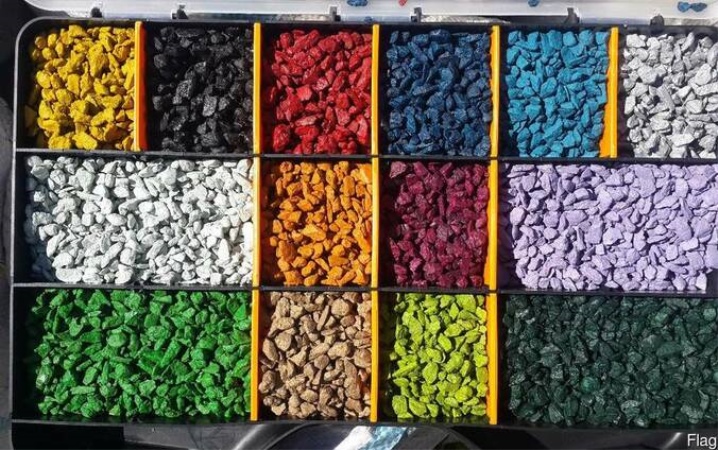
Where is it used?
As noted earlier, crushed marble is a versatile material that is used in many areas of both construction and decoration.
- It is worth starting with the more widespread use of stone, namely the manufacture of concrete solutions. When crushed stone is added to the mixture, the strength of the final consistency is noticeably increased, which is very important in construction. Typically, medium to large grains are used to compact the concrete structure.
- Decor is another, no less interesting industry where crushed marble is used. And these are not only various design ideas or some unusual buildings, but also quite everyday things that we come across quite often. This includes creating sidewalks and curbs. Here, the strength and physical properties of the material manifest themselves at their best.
- As for design, marble crushed stone is used for pouring a concrete-mosaic floor, where characteristics such as environmental friendliness, fire safety and low conductivity make part of the interior not only aesthetic, but also practical. For summer residents, this material is known primarily as an excellent opportunity to arrange flower beds, various paths and other parts of the garden. Do not forget about road construction, as crushed stone chips allow the coating to be denser.
- Of course, it is worth recalling the decoration of the outer part of the buildings. In these cases, the main advantage of crushed stone is its chemical characteristics, which make it possible to protect the surface of structures from fungus, as well as maintain an attractive appearance. It should be noted that this stone is used in the manufacture of various sculptures, monuments and other objects of art.
- Crushed marble is also important in agriculture, because it is added as a food additive for various animals, in particular chickens. In the winter season, this stone is included in the composition of reagents and mixtures that protect pedestrians from icy conditions. Aquarium owners know that crushed marble is the basis of the soil, as it is safe for fish and has the first level of radioactivity.
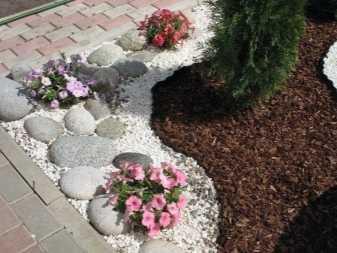


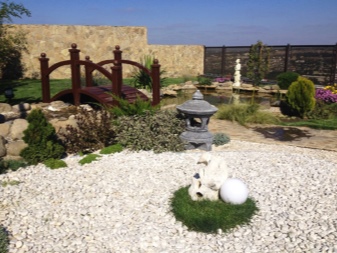
An example of decorating with marble rubble in the video below.













The comment was sent successfully.